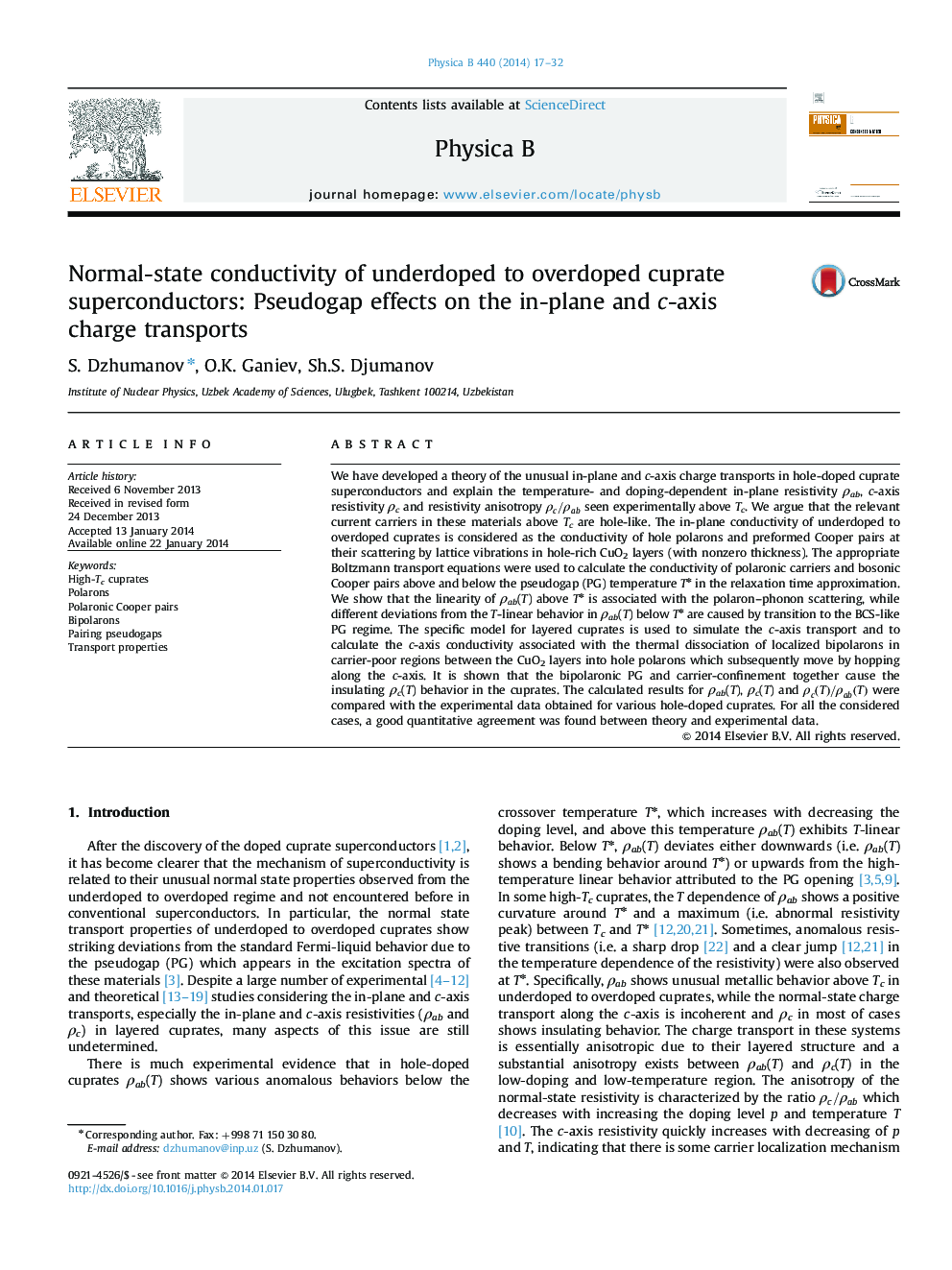| Article ID | Journal | Published Year | Pages | File Type |
|---|---|---|---|---|
| 1809623 | Physica B: Condensed Matter | 2014 | 16 Pages |
We have developed a theory of the unusual in-plane and c-axis charge transports in hole-doped cuprate superconductors and explain the temperature- and doping-dependent in-plane resistivity ρab, c-axis resistivity ρc and resistivity anisotropy ρc/ρabρc/ρab seen experimentally above Tc. We argue that the relevant current carriers in these materials above Tc are hole-like. The in-plane conductivity of underdoped to overdoped cuprates is considered as the conductivity of hole polarons and preformed Cooper pairs at their scattering by lattice vibrations in hole-rich CuO2 layers (with nonzero thickness). The appropriate Boltzmann transport equations were used to calculate the conductivity of polaronic carriers and bosonic Cooper pairs above and below the pseudogap (PG) temperature T⁎ in the relaxation time approximation. We show that the linearity of ρab(T) above T⁎ is associated with the polaron–phonon scattering, while different deviations from the T-linear behavior in ρab(T) below T⁎ are caused by transition to the BCS-like PG regime. The specific model for layered cuprates is used to simulate the c-axis transport and to calculate the c-axis conductivity associated with the thermal dissociation of localized bipolarons in carrier-poor regions between the CuO2 layers into hole polarons which subsequently move by hopping along the c-axis. It is shown that the bipolaronic PG and carrier-confinement together cause the insulating ρc(T) behavior in the cuprates. The calculated results for ρab(T), ρc(T ) and ρc(T)/ρab(T)ρc(T)/ρab(T) were compared with the experimental data obtained for various hole-doped cuprates. For all the considered cases, a good quantitative agreement was found between theory and experimental data.
